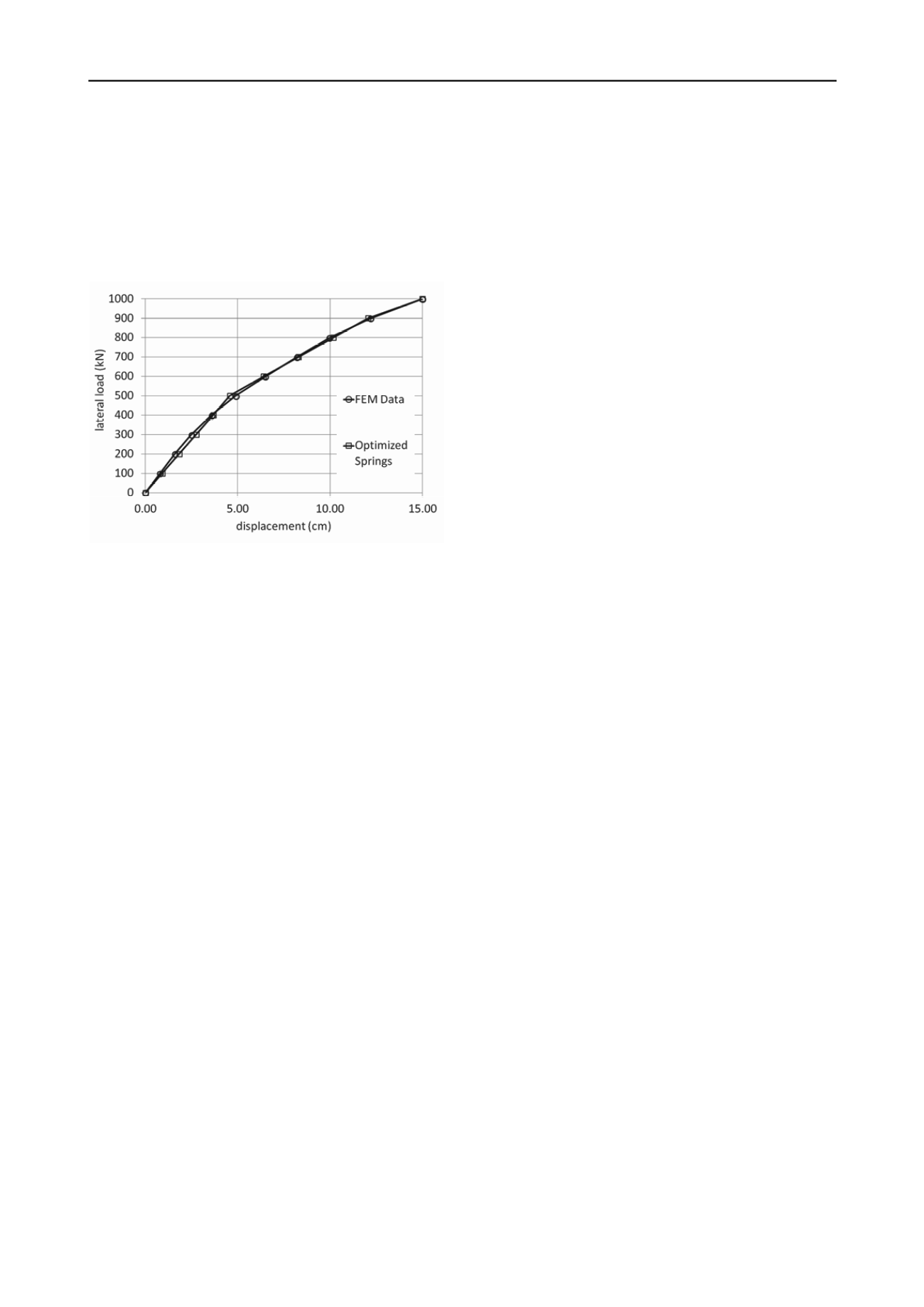
2872
Proceedings of the 18
th
International Conference on Soil Mechanics and Geotechnical Engineering, Paris 2013
The optimization process can also be applied to pile load
test data or any other method that generates the necessary
values. The example here fits only horizontal deflections at the
pile top. A better, slightly more complex approach is to fit both
deflection and pile head rotation data. Since this involves more
statistical degrees of freedom (double the number just
demonstrated) more springs would be necessary. Data that is
being compared can be assigned weighting (importance) values
if some data is more reliable or vital than others.
7 ACKNOWLEDGMENTS
The authors acknowledge the financial support of the Széchenyi
István University within the framework of TáMOP 4.2.2/B-
10/1-2010-0010 application.
8 REFERENCES
AxisVm, 2010.
Finite Element Analysis & Design Program
, users
manual, InterCad Ltd, Budapest.
Bak E., Koch E., Ray R., Sharle P., Szepesházi R. 2010. Parametric
study of combined pile-raft foundation.
Proc. of the XIVth Danube-
European Conference on Geotechnical Engineering
, Bratislava,
Slovakia, p. 13.
Hetényi M. 1964. Beams on elastic foundation
, Theory with
applications in the fields of civil and mechanical engineering
,
University of Michigan Press, Ann Arbor, Michigan.
MIDAS 2009.
MIDAS GTS users manual
, Information Technology Co.,
Ltd. Delft, Netherlands.
Reese L.C., Wang S.T 1997.
LPILE Plus 3.0 Technical manual of
documentation of computer program
, Ensoft, Inc., Austin, Texas,.
Szép J., Murinkó G., Szepesházi R. 2009. Modelling bridge
substructures, (in Hungarian)
Geotechnika conference
, Ráckeve,
Hungary, p. 22.
Szép J. 2011. FEM - modeling of abutment,
10th Slovak Geotechnical
Conference - Geotechnical Problems of Engineering Constructions
,
Bratislava, Slovakia, 30-31 May, 207-218.
Strom R. W., Ebeling R. M. 2001. State of the practice in the design of
tall, stiff, and flexible tieback retaining walls,
Technical Report
ERDC/ITL TR-01-1,
US Army Corps of Engineers 1-225.
Figure 4. Finite element data with optimized spring response fit.
6 CONCLUSION AND FURTHER STUDY
Harmonizing structural and geotechnical design methods is a
worthwhile challenge. Implementing the recently adopted
design methods of Eurocode opens the possibility to teach new
professionals a more integrated approach to design. However, in
order to accomplish this, design methods and software must be
better integrated and understood from both the structural and
geotechnical perspectives. In this paper several methods were
presented that Hungarian designers use for geotechnical and
structural projects. Due to the more rigorous demands of
modern designs, the substructure and superstructure
components must work together seamlessly.
As part of ongoing research at Széchenyi University, the
authors have presented several methods for analyzing and
designing piles for lateral loads. Ideally the methods would be
totally integrated; however this is not always possible due to the
nature of design contracts, project timing, and available design
software. Ideas and methods to overcome these limitations have
been given and it is hoped they will engender further discussion
by the engineering community.
Further research will focus on more complex structural and
geotechnical systems where the entire construction process is
modeled. By understanding the nuances of excavation,
earthwork, falsework, concrete placement and finish schedules,
further design efficiencies and enhancements can be found.


